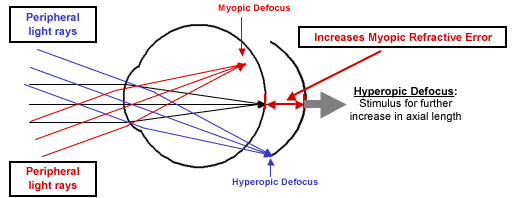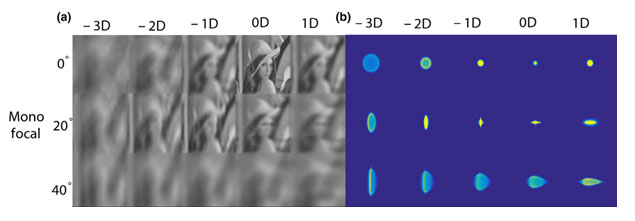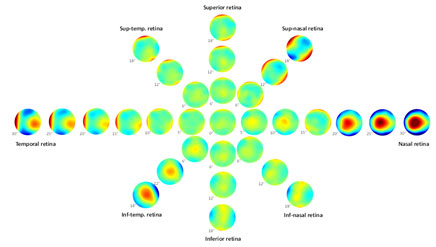
Advanced Physiological Optics Laboratory
Yoon Lab

Myopia is one of the leading causes of visual impairment worldwide and is linked to severe eye diseases such as maculopathy, retinal detachment and glaucoma. The overall prevalence of myopia in adolescents has increased substantially in recent years; approaching 25-50% in industrialized societies of the West and 60-80% in East Asia. A variety of factors such as age of onset, genetics, visual environment, accommodative ability and most recently, peripheral defocus of the retina have all been suggested to influence the progression of myopia. With higher levels of myopia becoming a significant public health concern, it is of crucial importance to find effective treatments to slow myopic progression in children.
The myopia control optical interventions showed a therapeutic effect with limited success to reduce myopia progression with randomized clinical control studies. The hypothesis behind myopia retardation using myopia control lenses is mainly thought to induce peripheral myopic defocus, thus inhibiting eye elongation. However, the exact mechanism of retinal blur detection is still not precisely understood. In addition, the peripheral retina may not be sensitive enough to detect precise defocus change due to its poor sampling resolution. These facts question the actual mechanism of myopia control lenses which may involve other unexplored factors beyond peripheral defocus alone. At our lab, we are working on understanding the possible unexplored mechanism behind myopia development and progression.
Peripheral aberrations and one's eye shape have been shown to have a significant correlation to axial elongation of the eye which leads to a progression of myopia. A higher progression rate has been shown to be caused by relative peripheral hyperopia as well as a prolate retinal shape (Figure 1).

Figure 1: Peripheral hyperopic defocus simulates the eye to grow longer in order to
focus peripheral lights rays onto the retina
Our goal is to understand the influence of peripheral aberrations on axial elongation and myopic progression over time. The specific objective is to determine how manipulation of peripheral aberrations can slow the progression of myopia and impact peripheral image quality. By manipulating the aberration profile of the eye, one can change the amount of refractive defocus, image quality and depth of focus in the peripheral retina which provides the ability to control myopic progression.
Blur anisotropy may be a signal that the eye uses to initiate myopia onset, while relative peripheral hyperopia may be a secondary effect. We can measure lower and higher order ocular aberrations across retinal eccentricity using our compact scanning wavefront sensing to characterize individual retinal image quality and individual optical blur anisotropy. Neural anisotropy at the same eccentricities can also be calculated by bypassing individual ocular optics using our binocular adaptive optics vision simulator.

We have developed a multidirectional ocular wavefront sensor which can measure ocular aberrations at a wide range of ocular eccentricities to capture pan-retinal aberration measurements.

Figure: Wavefront maps obtained corresponding to all HS images, analyzed for 5.5mm pupil and 10th order to Zernike polynomial